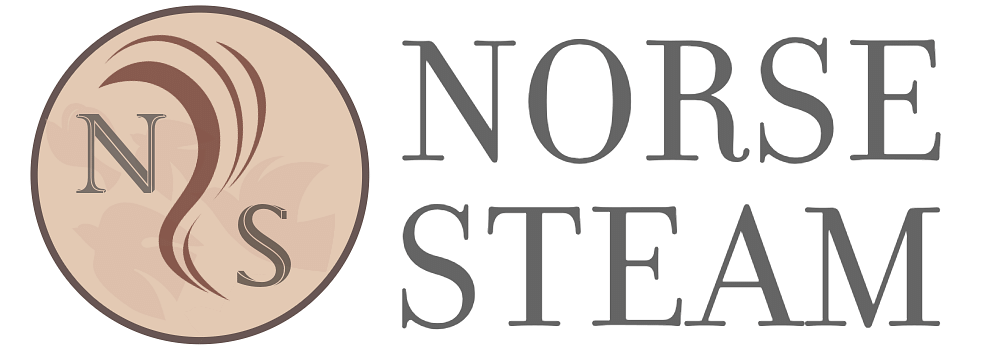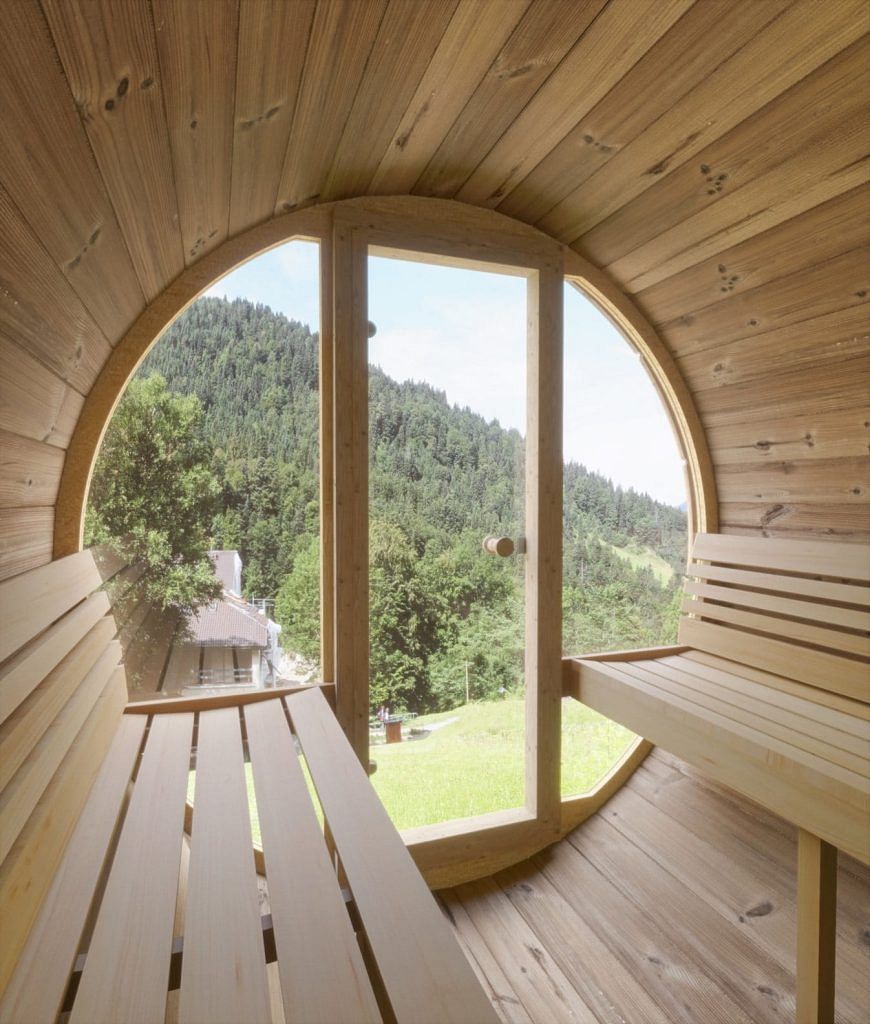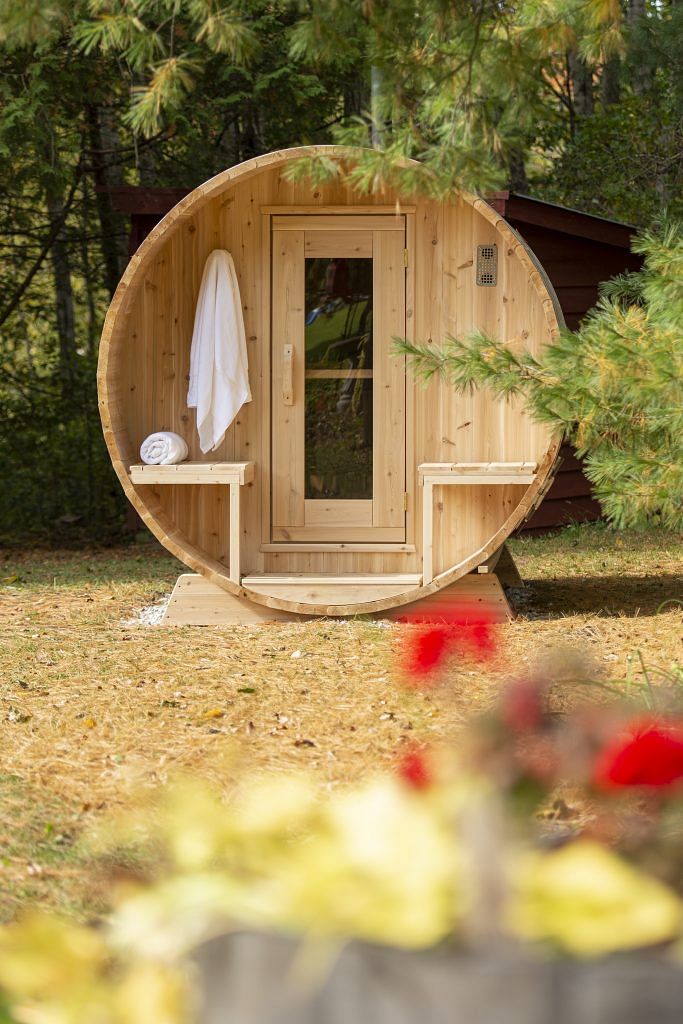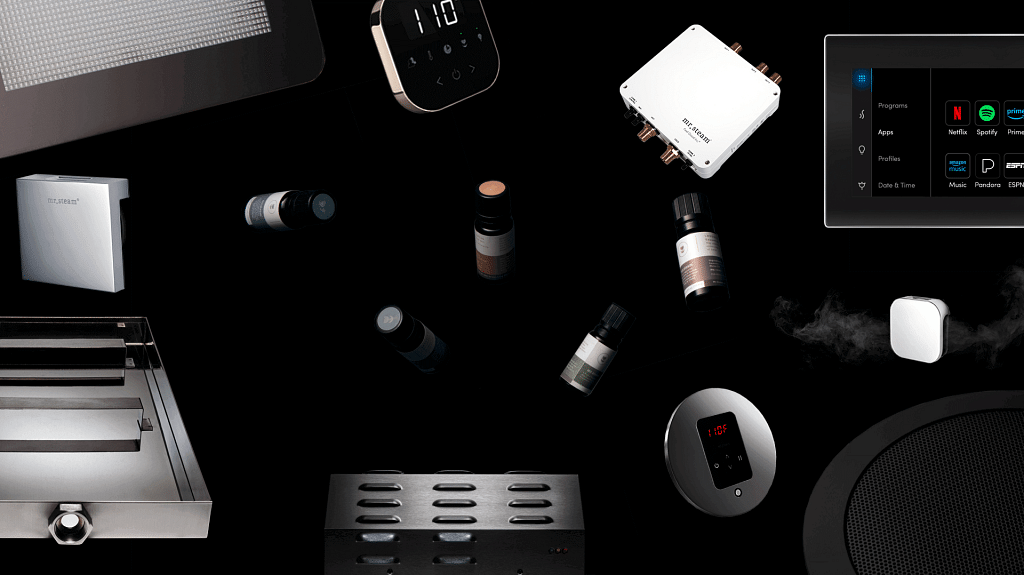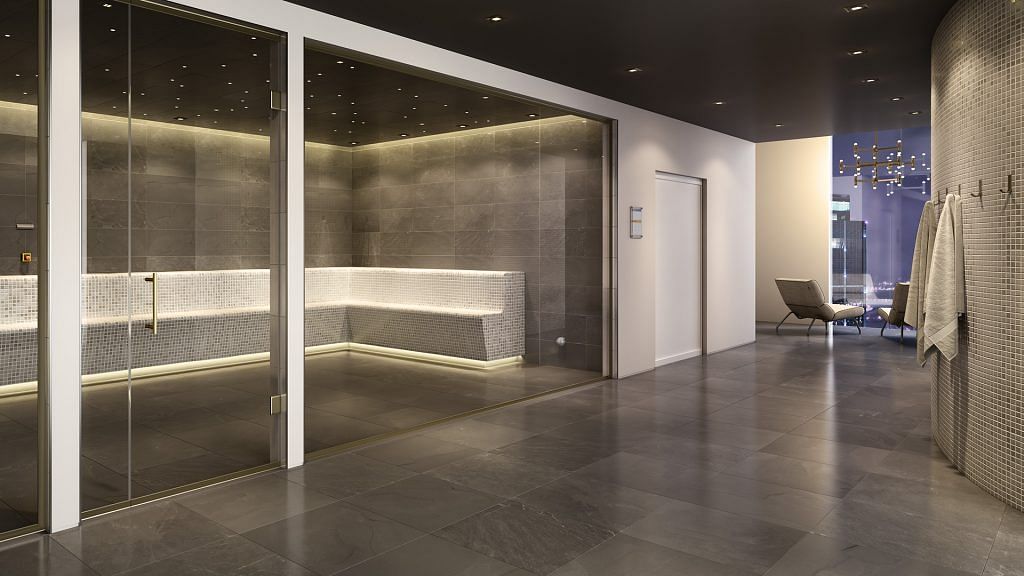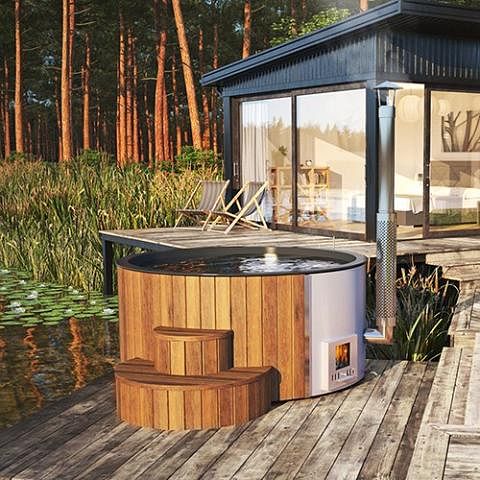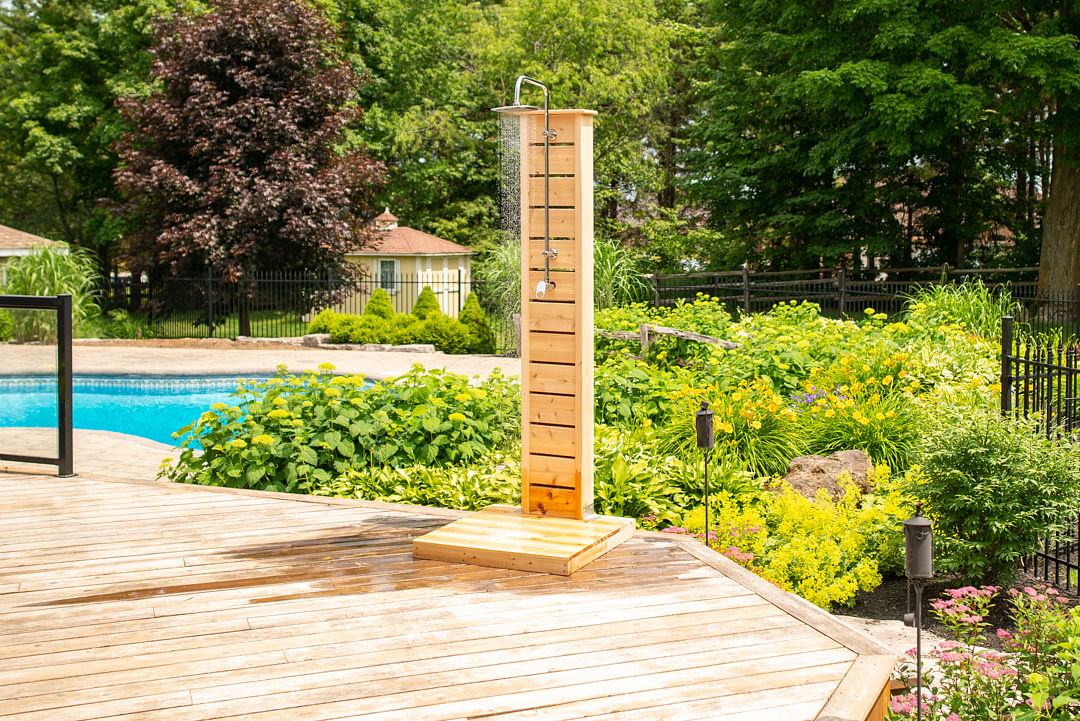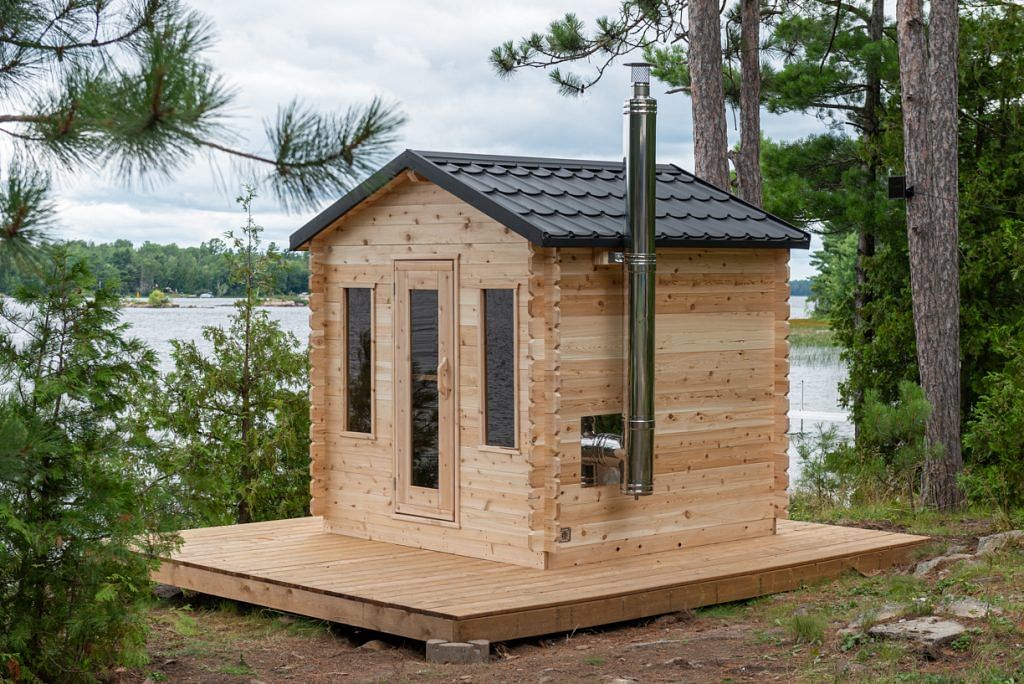Sauna
Thermowood vs Cedar Sauna: Which is the Right One for You?
Deciding on the perfect wood for your sauna is an important step in creating your own personal sanctuary of relaxation and rejuvenation. Thermowood and cedar are two of the most popular choices, each offering distinct advantages and characteristics. This comprehensive guide will delve into the world of thermowood vs cedar saunas. We’ll explore the pros and cons of each material, including durability, aesthetics, maintenance requirements, and suitability for different climates and sauna types. Whether you’re a seasoned sauna enthusiast or embarking on your first sauna build, this page equips you with the knowledge to make an informed decision and select the ideal wood to craft your dream sauna experience.
Are Thermowoods Good for Saunas?
Thermowood has become a popular choice for sauna construction, offering a compelling alternative to traditional cedar. But how does it stack up? Let’s delve into the advantages and disadvantages of Thermowood for saunas, helping you decide if it’s the right material for your needs.
Advantages:
- Durability: Thermowood undergoes a heat treatment process that significantly enhances its dimensional stability and resistance to warping, cracking, and rot. This makes it ideal for withstanding the fluctuating temperatures and humidity levels of a sauna environment.
- Low Maintenance: Thermowood requires minimal maintenance compared to cedar. Its reduced moisture content minimizes the risk of mold growth, and it doesn’t require regular oiling to maintain its properties.
- Improved Aesthetics: Thermowood boasts a beautiful, rich brown color that adds a modern touch to any sauna. This color also tends to darken slightly over time, developing a warm, aged patina.
- Comfortable Feel: Thermowood offers a smooth and splinter-resistant surface that feels pleasant on the skin, even at high sauna temperatures.
- Versatility: Thermowood’s stability makes it suitable for various climates, unlike cedar which can perform less optimally in very humid environments.
- Sauna Type Compatibility: Thermowood is well-suited for all types of saunas, including dry saunas, steam saunas, and infrared saunas.
Disadvantages:
- Higher Cost: Thermowood is generally more expensive than cedar upfront due to the additional processing involved.
- Less Traditional Look: While aesthetically pleasing, Thermowood’s color deviates from the classic light-colored wood tones often associated with saunas.
- Limited Availability: Thermowood may not be as readily available as cedar in all regions.
Use Cases:
Thermowood shines in saunas where durability, low maintenance, and a modern aesthetic are priorities. It’s a great choice for:
- High-use saunas: Gyms, commercial spas, or frequently used home saunas will benefit from Thermowood’s exceptional resistance to wear and tear.
- Humid Climates: In areas with high humidity, Thermowood’s stability makes it a more reliable option than cedar, which can be prone to warping in such conditions.
- Modern Sauna Designs: Thermowood’s rich brown color complements modern and contemporary sauna design styles.
What Types of Thermowoods are Used for Saunas?
Thermowood can be produced from various softwoods, each offering slightly different characteristics. Here are some of the most common types used for saunas:
- Thermowood Pine: This readily available option provides a good balance between affordability and performance. It boasts excellent dimensional stability and a pleasant, lightened color compared to untreated pine. Thermowood pine is a popular choice for budget-conscious sauna builders.
- Thermowood Aspen: Aspen is known for its naturally light color, which is further accentuated by the thermowood treatment. This light tone creates a bright and airy feel in the sauna. Thermowood aspen is particularly favored for its smooth, almost silky texture, making it very comfortable on bare skin.
- Thermowood Spruce: Thermowood spruce offers a good compromise between durability and cost. It possesses excellent dimensional stability and resistance to warping and cracking. Due to its neutral color tone, thermowood spruce is a versatile choice that complements various sauna design styles.
Is Cedar Good for Saunas?
Cedar has long been a beloved choice for sauna construction, prized for its natural beauty and unique properties. But is it the right choice for your sauna? Let’s explore the advantages and disadvantages of cedar to help you decide.
Advantages:
- Natural Fragrance: Cedar boasts a pleasant, aromatic scent that many associate with the traditional sauna experience. This aroma can add to the relaxation and therapeutic benefits of sauna use.
- Moisture Resistance: Cedar naturally possesses some resistance to moisture and mildew growth, making it suitable for sauna environments.
- Insulation: Cedar offers good insulating properties, helping to retain heat within the sauna and promoting energy efficiency.
- Comfortable Feel: Cedar has a smooth texture that feels pleasant on bare skin, even at high sauna temperatures.
- Aesthetics: Cedar offers a beautiful light wood tone that adds a natural and classic touch to any sauna design.
- Versatility: Cedar can be used in various sauna types, including dry saunas, steam saunas, and infrared saunas.
- Affordability: Compared to thermowood, cedar is generally a more affordable option.
Disadvantages:
- Maintenance: While naturally resistant to moisture, cedar requires regular cleaning and occasional oiling to maintain its properties and appearance.
- Warping: Cedar can be more susceptible to warping and cracking compared to thermowood, especially in high-humidity environments.
- Durability: While durable, cedar may not be as long-lasting as thermowood, particularly in high-use saunas.
- Limited Availability: Certain types of cedar, like Western Red Cedar, may have limited availability in some regions.
Use Cases:
Cedar remains a great choice for saunas in many situations, particularly:
- Home Saunas: For personal or family use, cedar offers a good balance between affordability, aesthetics, and performance.
- Dry Saunas: Cedar’s natural moisture resistance makes it well-suited for dry sauna environments.
- Traditional Style Saunas: Cedar’s classic look and natural aroma contribute to a timeless and authentic sauna experience.
However, cedar might not be the best choice for:
- High-Use Saunas: In gyms or commercial settings with frequent use, thermowood’s superior durability might be a better option.
- Humid Climates: In areas with very high humidity, cedar’s susceptibility to warping could be a concern.
- Those Who Prefer Low Maintenance: If minimal maintenance is a priority, thermowood’s reduced need for oiling might be more appealing.
Thermowood vs Cedar: Which is the Best for Your Sauna?
Choosing between thermowood and cedar for your sauna depends on your priorities and preferences. Here’s a table summarizing the key points discussed:
|
Feature |
Thermowood |
Cedar |
|
Durability |
Excellent |
Good |
|
Maintenance |
Low |
Regular cleaning & occasional oiling |
|
Cost |
Higher |
More affordable |
|
Aesthetics |
Modern, rich brown color |
Classic, light wood tone |
|
Feel on Skin |
Smooth, splinter-resistant |
Smooth, comfortable |
|
Moisture Resistance |
Excellent |
Good |
|
Warping Resistance |
Excellent |
More susceptible, especially in high humidity |
|
Sauna Type Compatibility |
All types (dry, steam, infrared) |
All types (dry, steam, infrared) |
|
Best Use Cases |
High-use saunas, humid climates, modern designs |
Home saunas, dry saunas, traditional style, budget-conscious |
Here’s a quick guideline to help you decide:
- Prioritize durability and low maintenance: Choose thermowood.
- Value affordability and a classic look: Choose cedar.
- Focus on a modern aesthetic and excellent performance in any climate: Thermowood might be worth the higher cost.
- Building a home sauna for occasional use: Cedar can be a great choice.
Ultimately, the best choice comes down to your specific needs and preferences. Consider the factors above and weigh them against your priorities to make an informed decision.
Choosing between cedar and thermowood is a tough decision since there are a lot of things to consider. Let us show you all the factors so you choose right.
